We raise hogs and always come out far ahead. Learning how to lower feed costs has really helped us out.
Costs to feed a commercial-breed hog is about $250. Young pigs cost around $100. Processing fees are about $250. The total cost per pound of cut and wrapped pork is about $600, or $5/lb. cut and wrapped. Smaller breed hogs have similar costs per pound of processed pork.
Our home-raised heritage pork costs us $1/lb. By being smart and doing things outside of the ordinary, we are able to lower our costs significantly and still have quality pork that our friends and neighbors look forward to.
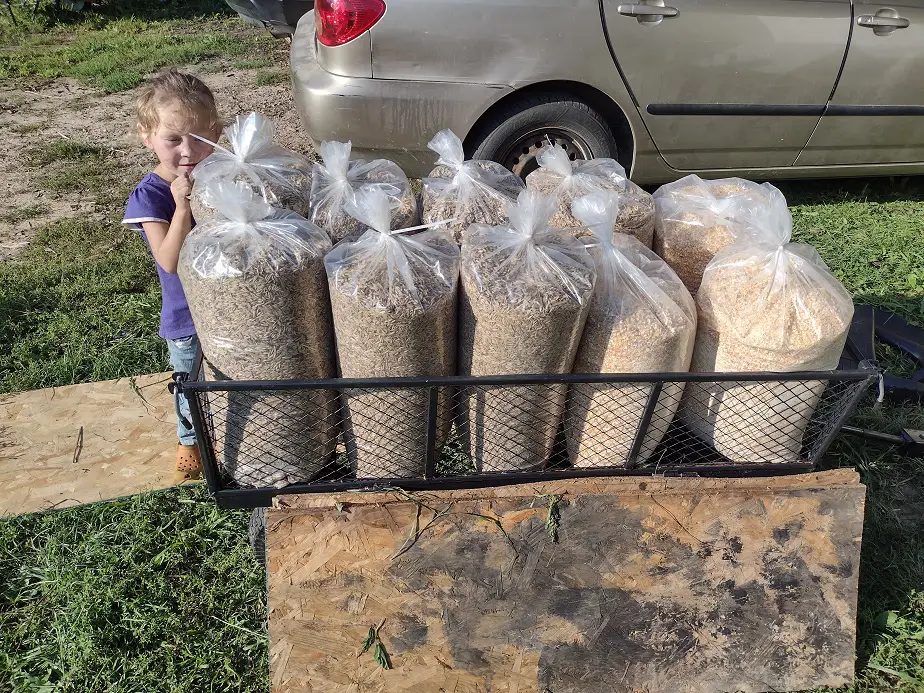
How to Feed Pigs Cheaply
We feed our pigs at half-cost. There are three ways to save a lot of money on pig feed: repurposing food waste, buying directly from farmers, and making fermented feeds. We do all these, as well as feed wild greens. Our heritage breed pigs grow well, and are happy and healthy.
For affordable feed, forget about buying the pre-bagged, fancy feed. Pre-mixed, pelleted feed in 40 or 50-pound bags is the most expensive way to feed a pig. If you buy by the pallet load, you can usually get a 10 percent discount, but that’s still horrible.
Purchasing bulk from a local grain elevator can be cheaper, but you’ll need a way to transport and store it. We don’t do either. It just does network on our budget. I have learned how to raise pigs outside of the modern, cookie-cutter model that everyone else uses these days.
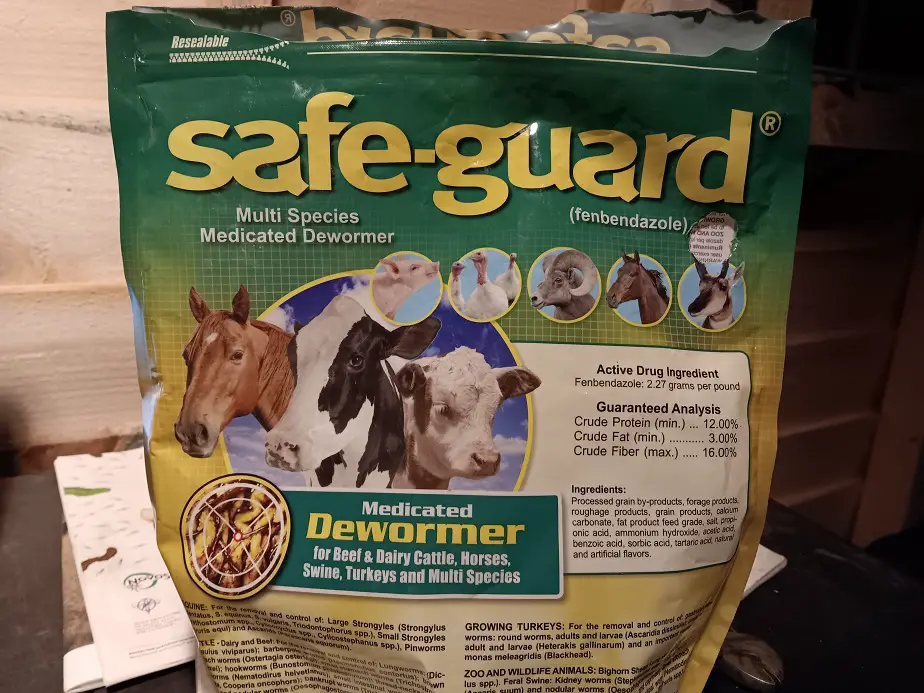
One thing you need for pigs, no matter your raising system, is a parasitic worm treatment. The best swine dewormer is Fenbendazole. It’s known by the brand name Safeguard. Safeguard is available as a medicated corn/alfalfa pellet. It’s the only way I can worm my pigs since they won’t stand still for an injection of Ivermectin. It’s easy and cheap.
- There is a stronger pellet for swine only. Here it is on Amazon
- There is a weaker pellet for general barnyard livestock, including swine. Here it is on Amazon.
I use the multi-species version because it’s what’s available in my local store and I can use it for my chickens too. It’s the most effective swine wormer and the easiest to administer. I use it on all weaned piglets and adults twice a year. Don’t go without it.
The first thing we do is save all food scraps and kitchen waste. All produce trimmings, mildly spoiled food, unwanted grease, or crumbs go in a small bucket for the pigs. They get it for dinner every day. I’m strict about this. Plates get scrapped and banana peels get saved.
Dirty pots and pans get rinsed with a little water and then dumped in the bucket. Food has no place in the trash if animals can eat it. Big chunks can be chopped up so it makes a better hog slop. I’ve been able to raise a single, small-breed hog on food waste alone.
Next, we look for basic concentrated feeds. Concentrated feeds are things full of energy or protein like beans and corn. They make up most of a commercial hog feed mix. The energy comes from high-starch foods like grains and bakery breads, and the protein from beans and peas. You can make your own mix.
I can buy ground corn, oats, and soybean and mix them at a ratio by weight of 5 parts corn, 3 parts oat, 2 parts soybean. That’s a great base feed mix and costs fifteen to twenty percent less than pelleted feed. Still, I can do better. Unprocessed grains (not ground, roasted, or crushed) are cheaper.
You should do something to give pigs additional fiber, vitamins, and minerals to balance the diet out.
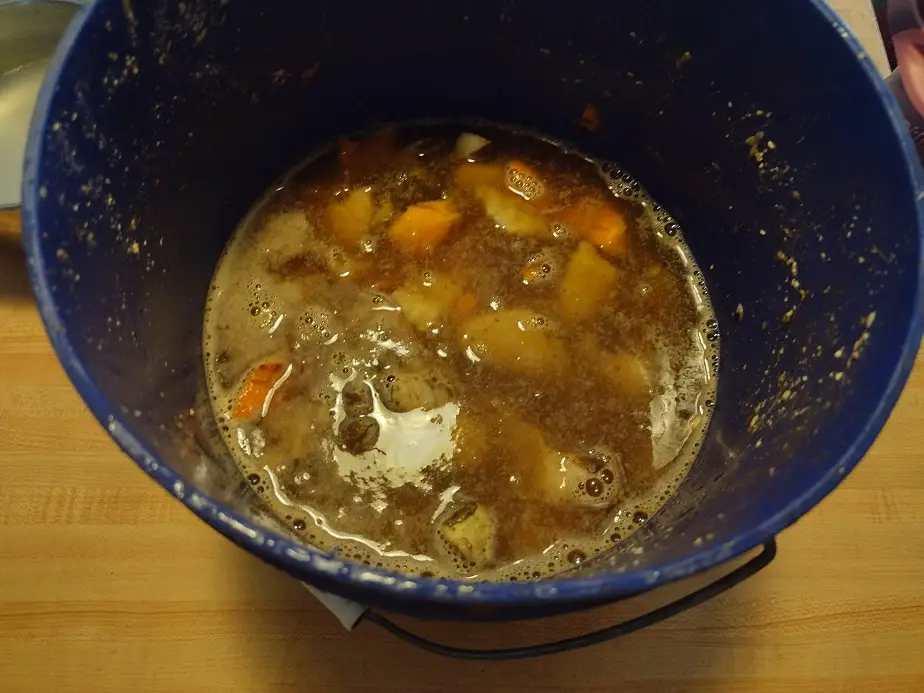
Fermenting feed for pigs
Unprocessed grains aren’t fully digested by pigs. You can get 10-20 percent better use if the feed is roasted, finely ground, or fermented. Fermenting the grains actually does a better job of improving the feed value than other methods. We ferment all our pig’s grains.
Basically, fill a bucket half with grains and top it off with water. Within 3-5 days, the fermentation should be perfect. Fermenting adds 20-40 percent protein to the grains, especially lysine which is lacking in grains. That means you need to buy less protein for your pigs. Protein is the expensive part of a feed mix.
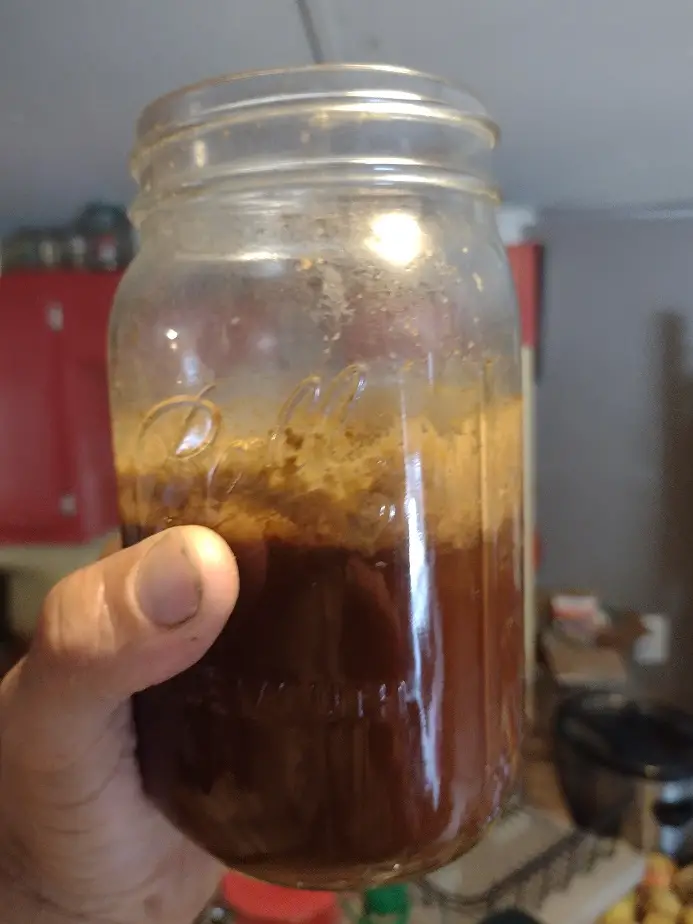
If you ferment well, you can use the feed mix above with about half the amount of soybean and still have a quality feed ratio. Other foods can be fermented to improve the feed value too. I’m currently fermenting a mix of chopped carrots and sugar beet (we got them cheap).
Fermentation breaks down the fibers and locked up proteins in a feed so they can be digested by pigs. Corn silage and hay silage (harvested green, chopped up, and fermented without oxygen) are often used for a pig feed supplement up to 20 percent of a total diet.
For more info on fermenting pig feeds, read this article: Making Fermented Feed for Pigs
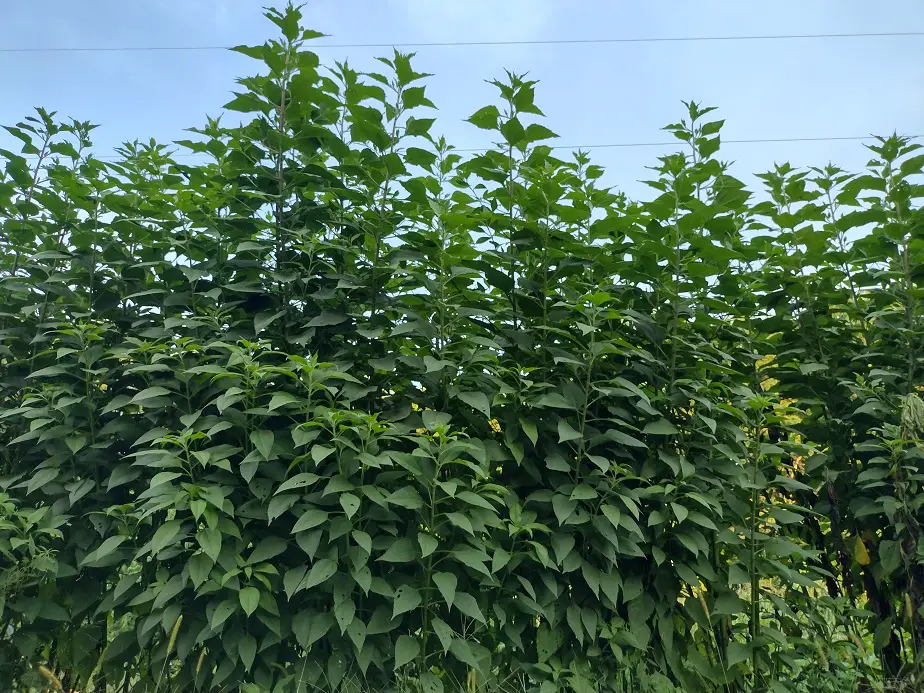
Feeding Pigs Fresh Fodder
Feeding pigs fresh wild greens and growing some fodder crops like sugarbeet and sunflower will reduce the feed bill. Assorted wild greens can balance out a fiber, vitamin, and mineral-deficient diet. Our pigs get wild greens, mostly grass and chicory leaves. They eat it right up. We give them each a salad a day.
We also give them green leaves from the lower growing tree branches, and some fodder crops we purposefully grow. I like to grow beets, either mangel beet or sugar beet, and sunflowers. The beets do good to be chopped and fermented a bit.
Sunflower seeds are high in protein and fat. They help pigs bulk up for winter. We also grow a few bushels of corn to help them get through winter. If I had one more acre, I would plant it half corn and half sunflower for the pigs.
This year I’m growing Jerusalem Artichokes for our pigs. If it goes well, we’ll grow them every year as an energy source for the pigs. The tubers are fairly digestible to pigs and they have good nutrition and energy content.
You can often get leftover produce from grocery stores, particularly the small ones. Just stop by or call them up and ask to speak to a manager. Food pantries may have a lot of old foods to get rid of, and small restaurants are often willing to set aside food waste for you if you give them a few dollars for it.
Local bakeries or small food shops often hate dealing with wasted food. You can often arrange a weekly or bi-weekly pickup. Some charge for it, and some don’t.
Save Money by Butchering Your Own Pigs
Butchering costs $250-$300 a pig. Doing it yourself will save money. Plus, you will know exactly how the meat was handled and are able to save more scraps as well as soup bones. Depending on pig size and your skill, it takes half an hour to 3 hours to butcher a pig. That’s well worth saving $300.
First, you need to slaughter it. Most commonly used is a bullet to the brain. After slaughter, pigs are raised up on a gambrel and gutted then skinned. Large pigs can be skinned in multiple pieces to make it easier to peel off. The first few times will probably be a blunder, but you will get better with time.
Pork is still pork, even if the cuts don’t look really pretty. The most important part is to cool the meat as quickly as possible. You don’t need to hang a whole pig in a walk-in cooler. Just quarter it up fast, soak the meat in some ice water or cold well water to cool it down, then get it off to the freezer.
If you are short on time or it’s taking a while, you can freeze large pieces to deal with later. It’s more important to cool it quickly after dispatch. Butchering in cold weather helps a lot. I like to wait until the temperature is at least down to 40 degrees. Then the air cools the meat while I work.
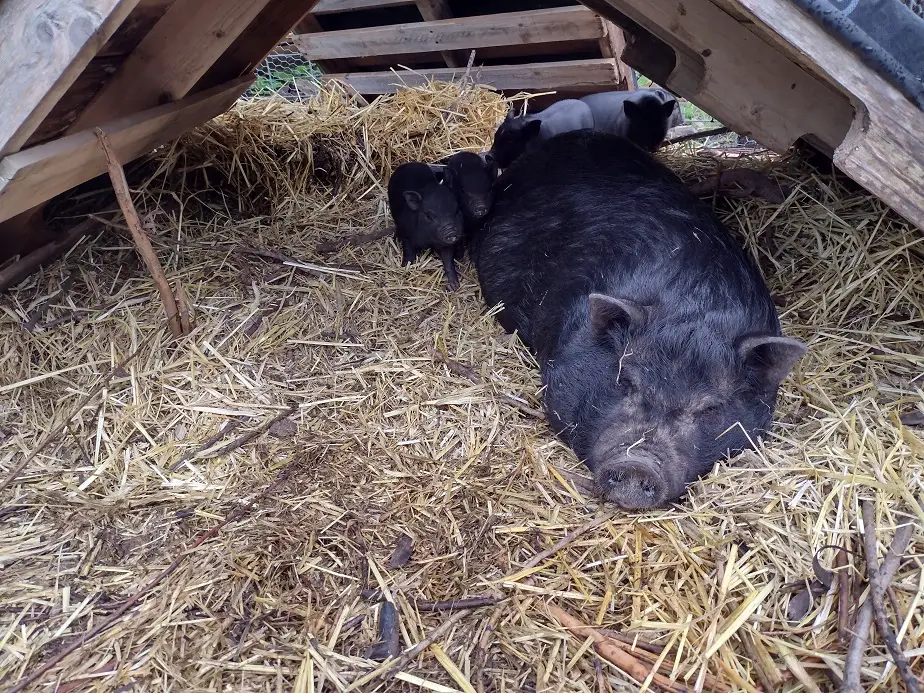
Save Money by Breeding Your Own Pigs
By breeding one litter of pigs a year, we save 25 percent, even after feeding the adult breeding pair all year long. Mature commercial breed hogs are huge, 500-900 pounds. Small-breed hogs like Potbellies and Guinea Hogs are much more practical for raising yourself.
We raise Potbellies. They’re quite easy and efficient. 5 potbelly pigs equal one commercial hog at the same age. Potbellies have liters of 6-10 and each one yields 25-30 pounds of pork at 9 months old. They can have 2 litters a year. That’s 300-500 pounds of meat a year on the low end.
They are easily contained by hog panels and 5-foot t-posts. Sows and young ones can have one t-post per pannel but boars should have two per panel because they get rowdy now and then. Even so, a full-grown potbelly boar weighs no more than 150-200 pounds. You can deal with that.
Kunekunes and American Guinea Hogs are other similarly sized and temperament breeds but are more expensive and harder to find.
I hope this helped you out. Have other money-saving tips? leave a comment down below!
Related articles:
- How to Feed Pigs at Half-Cost
- Heritage Hog Sizes and Butcher Weights.
- Do Pigs Need Pasture?
- Goats vs Pigs, (best homestead animals)
- Raising and Butchering Potbelly Pigs for Meat

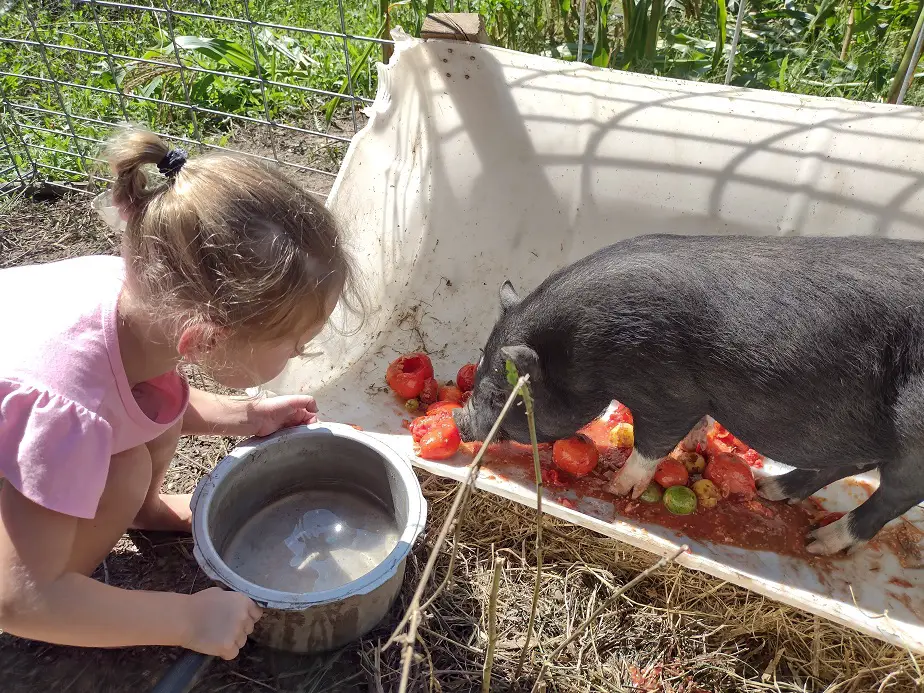
Good Day,
I just started with pigs, many people are ot interested to assist in this field, i found this as a good schooling and must compliment you for this write up. Please do not hesitate to learn me more about pig farming, feeding formulas etc. I got European Bush Pigs and want to cross breed with the Landrace to improve meat production.
Thank You
Francois
South Africa.